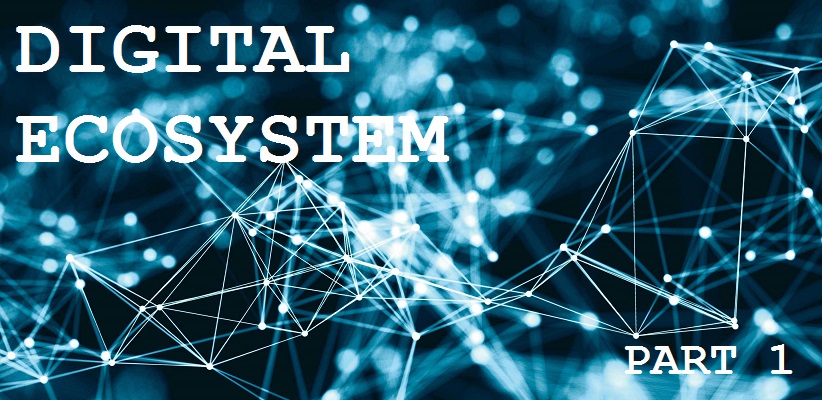The world has fundamentally and irreversibly changed; since the launch of the smartphone, technology has enabled on-demand access to information and opened a Pandora’s box full of anything our hearts desire. This is challenging for marketers to find new ways to connect with audiences. For search engines, this was a turning point in the services that they offer.
Where before, “web search” brands – the likes of Google, Yahoo, Bing and Baidu – were consumers’ first port of call, they are now rapidly losing share to new competition (particularly Amazon, WeChat and Facebook) and formats (primarily from voice and apps).
Personalization has become a key battleground too, as customers don’t just want quick results, but tailored suggestions that are directly relevant to their lives. Search engines are having to adapt to stay relevant, bringing a much-needed change in dynamic between SEOs and the major players in the space.
Adapting search engines to the mobile-first user
Before discussing how to react to the change, it’s important to consider how and why we are in the situation we find ourselves in. With the launch of the App Store in 2008, users have been able to connect directly with the brands they love. But historically, this was only valuable if you knew exactly what you wanted and, more importantly, unhelpful if you sought to browse products from multiple providers.
With users turning to search to fulfill their needs, the apps evolved. While search engines gave customers choice, they were not able to provide a recommendation.
There was a growing user need for the ability to aggregate and tailor information; to provide choice, but save time browsing – and it was in this space, coupled with the increasing ubiquity of mobile technology, that Airbnb, Amazon and other brands started to thrive.
These platforms have become synonymous with the services they provide. We no longer want to browse across different websites to find the products we need, when we can look in one place – and so the balance shifted from search more towards apps.
Search engines are evolving to counter this challenge. A great example of this is Google Maps, which (albeit still an industry-leading service) has massively improved the features it offers to business (e.g. through Posts) and agencies via its Google My Business platform.
But there is a clear change in approach from Google around this; where before the focus was on collating information and limiting the customization options, this has shifted to providing marketers (and small businesses) with an extensive set of tools through which to enhance their listing and stand out from the crowd – and, importantly, increased support and guidance on how to use these.
The theme of search engines working more closely with search marketers is important, as this is both a necessity for both parties – and an opportunity.
Taking the step from ten blue links to “position zero”
Customer attention spans are dropping to seconds. This is a behavioral change that will underpin all future developments in the search space. As customers’ appetite for knowledge grows, we provide more information and the technology to allow for faster, more informal ways to consume this content.
I believe that as humans, we’ve passed the critical moment from which we cannot return; our brains are now fundamentally hardwired to continue looking for the next thing, and to succeed, marketers need to consider this as a broader psychological change. One that alters the way we do everything, not just create more content to slake our perennial thirst for more.
But what has this got do with search? In short, everything – and we’re already seeing the output of this change. As users seek to click less, the number of featured snippets showing for queries is rapidly increasing and there is an ever-growing number of rich result formats being launched into the wild.
These not only provide answers directly to searchers but, in many cases, offer a similar experience to the apps that search engines are losing out to. And yet, for some, “optimizing for position zero” has become the new “build a responsive site”, pre-Mobilegeddon.
A well-intentioned idea, but one that will not be executed upon until it is too late. This is ultimately the wrong approach and one that will cost your brand, business or clients dearly if you wait.
Unlike mobile, optimizing for answer queries is difficult. To start with, the latest stats put the number of new, unique queries seen every day at around 15%. The optimist will say this is an opportunity and should be a key area of focus for growth. However, the realist will rightly ask how you can create a response to a query that doesn’t yet exist.
This comes down to a broad change in mindset. Often, we are limited in thinking only about how to keep customers in the conversion funnel, or “customer transaction management” as Martin Newman of Practicology recently referred to it.
This approach will yield a good return, if you can make it work, but the space will be competitive (unless you have a truly unique product or service) and it’s likely someone will have already beat you to the punch.
Rather, we need to do true “customer relationship management” and think about the touchpoints you could have with your customers, based on what they need, outside of your brand.
Here, you’ll find searches that are yet to be owned, in places your competitors aren’t even looking – but your customers are.
A world in color, not two hundred ranking factors
Identifying the opportunity is, however, only part of the challenge. You may now have a better understanding of which area to target, but appearing in that space is another matter entirely.
When optimizing for the traditional ten blue links, search marketers often revert to the original concept of 200 ranking factors. This breaks down into themes of focus – accessibility, relevancy, authority, etc. – but the basis of our strategy is to satisfy a predetermined list of items we believe (through industry-wide testing and experience) have an impact.
However, I believe this is a limiting view, although that’s not to say that this approach doesn’t still work – it does – but it’s the difference between watching a film in black and white versus full color. In both you’ll see what’s happening: in color you’ll notice the detail, and this will add to your knowledge of the plot and the world the story is based in.
Google uses an algorithm to rank its results; this is the first thing SEOs learn when starting out. We also know that it uses machine learning to power parts of this and to test new features.
However (and this is key to understanding how to optimize for position zero), Google has access to trillions of data points around search and we know that, since 2012, it has mapped these out into “things, not strings”. This isn’t something we consider when focusing on our core 200 factors, but the information it receives clearly comes from somewhere and where there is a process to collate, there is an opportunity to optimize for this.
Google lists three steps to how search works – crawling, indexing and serving – but there’s a fourth. If crawling is “finding” the information, indexing is “cataloguing” and “storing” it, and serving is deciding how to display this back to users, we’re missing a step around “understanding” the information; often referred to as “parsing”. This is the part we know (definitively) the least about, but is fundamental to showing as an answer result.
This concept was deftly explained by Gianluca Fiorelli in the 2016 revision of his “Wake up SEOs, the new Google is here” post. Over the past 18 months, one thing has become clear – this is truly the future.
However, many still believe that “knowledge graph optimization” still centers around adding structured data. Undoubtedly, this is important, but as Gianluca states, “semantics (or the links between concepts and language) is more than structured data” and that we need to consider both the code itself and the website architecture.
To succeed in today’s digital ecosystem, we must build well-structured repositories of knowledge that crawlers can use to quickly engage their time-poor, information-hungry audience.
We must look to the user journeys and touchpoints our customers want to take, not the ones we think we should create for them. To again quote Martin Newman, “we must become customer-obsessed or die”.
______
by Ric Rodriguez
Source: searchenginewatch.com


